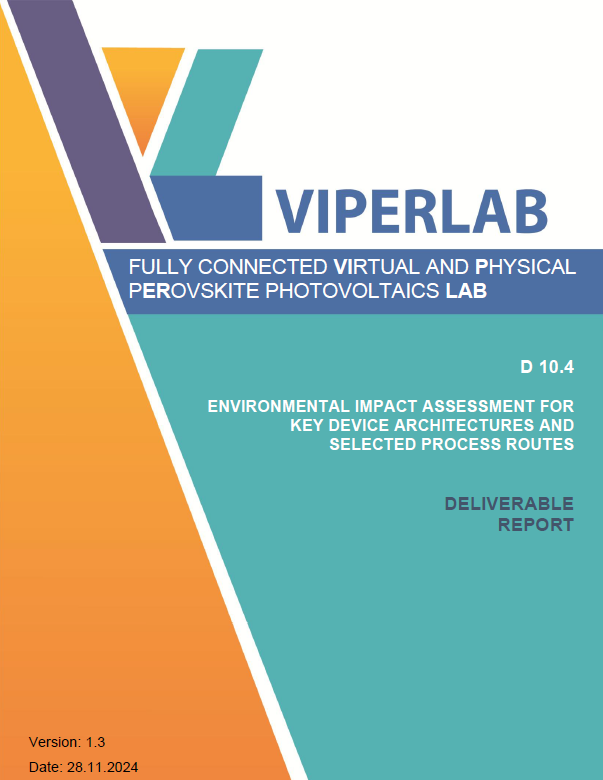 |
|
D10.4 ENVIRONMENTAL IMPACT ASSESSMENT FOR KEY DEVICE ARCHITECTURES AND SELECTED PROCESS ROUTES
VIPERLAB is a research infrastructure project that aims to create a European environment, where various physical and virtual infrastructures from 13 VIPERLAB partners can be accessed by different users from Europe and abroad. VIPERLAB identifies perovskite PV as the key emerging technology that will be the lever for a future market penetration of EU-based PV production with lowest costs and lowest carbon footprint.
The overall goal of the work package 10 is to provide guidance for the infrastructure and technology development within VIPERLAB by evaluating and optimizing the environmental, social and economic impact of new perovskite-based technologies. To this end, this work package will:
• Provide the data (material, process flows etc.) necessary for such an evaluation
• Evaluate the environmental (Life Cycle Assessment, LCA), social and economic (Levelized Cost of Electricity, LCOE) impact of new perovskite-based technologies and how this impact is affected by the application, device design, choice of equipment and process.
This report D10.4 presents the insights and methodology in life cycle assessment from four members of the project consortium – Fraunhofer, CEA, CENER and HZB for both single and multi-junction photovoltaic technologies. The aim is to provide the environmental impacts and their hotspots, specifically in the case of new technologies like perovskite and perovskite-silicon tandem solar cells and modules. Due to the use of critical material, it is important to understand not only the global warming potential of new photovoltaic technologies but also the impact on human toxicity and resource depletion. The report shows the hotspots and the environmental competitiveness of single and multi-junction photovoltaic technologies as well as the status and challenges in modelling new photovoltaic technologies. The results of the LCA are to be published in a peer reviewed journal as well as are aimed to be presented at an international conference in 2025. As such, this deliverable report will mainly focus on the methods followed to carry out the life cycle assessment and not contain any detailed results to maintain novelty and not hinder efforts to publish and/or present the results at a conference. However, the results of the analysis were presented and discussed with the project consortium at the final general assembly meeting held in Brussels in November 2024 and are briefly mentioned in the summary.
|



